Thresher sharks are some of the most extraordinary creatures swimming in our oceans today. With their distinctive, scythe-like tails and sleek bodies, these sharks are true marvels of evolution. Found in tropical and temperate seas worldwide, thresher sharks have extraordinary abilities. Sadly, these magnificent creatures are under threat from human activity, even though they pose no danger to humans and are in fact shy and wary of us.
Tail Whip Masters
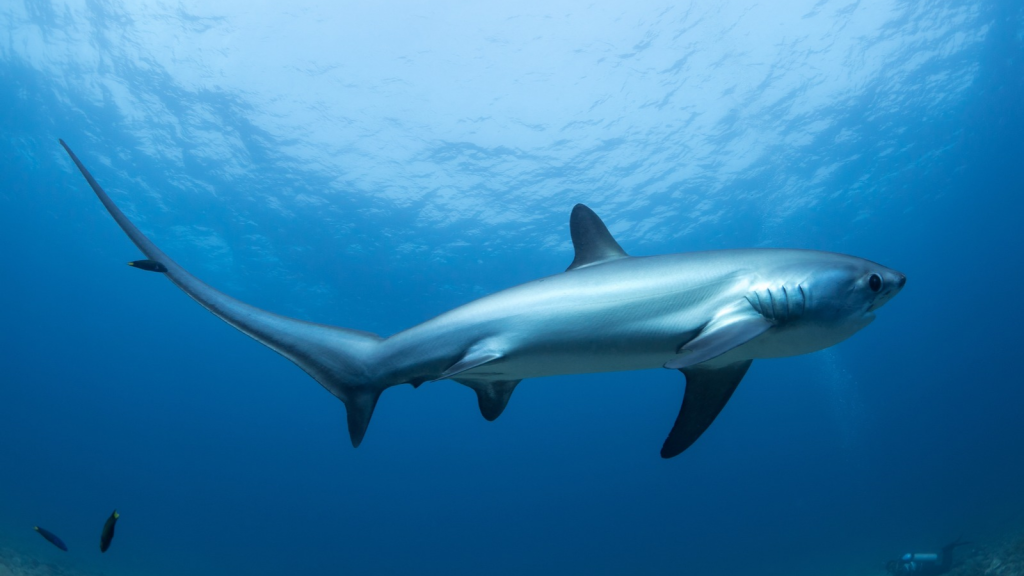
Thresher sharks are famous for their extraordinarily long, whip-like tails. This caudal fin can be as long as the shark’s body, making up about half of its total length. They use this tail like a weapon, stunning or killing prey by rapidly slapping the water’s surface. This unique hunting method is rarely seen in other marine animals. The tail can move at speeds of up to 80 mph, creating a shockwave that stuns fish within a tight radius.
Olympic-Level Jumpers
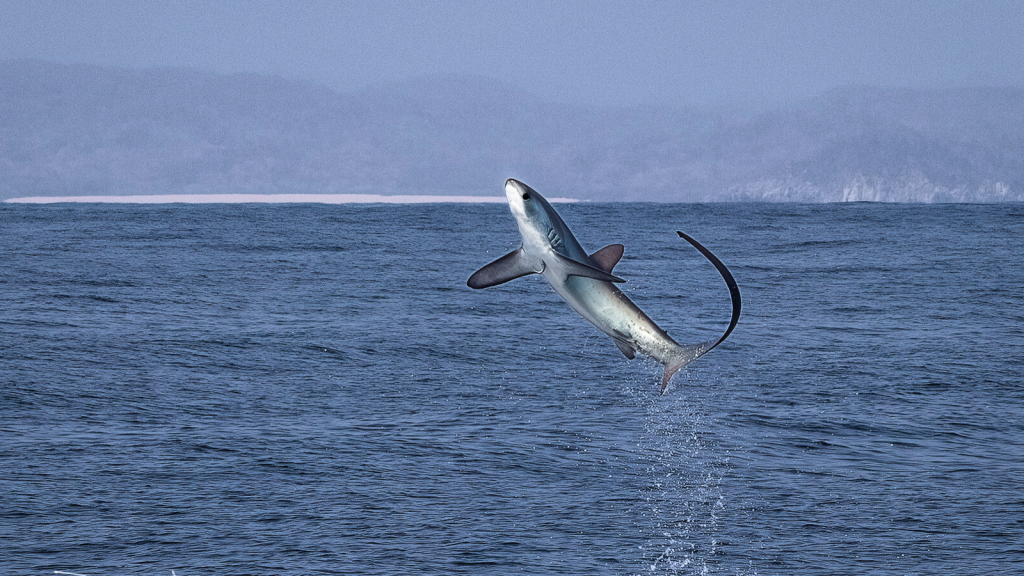
Despite their size, thresher sharks are incredible acrobats. They’ve been observed leaping completely out of the water, a behaviour known as breaching. These spectacular jumps can reach heights of up to 6 metres above the surface. Scientists believe this behaviour might help remove parasites or communicate with other sharks. The force required for these jumps is so great that the splash can be heard from considerable distances.
Deep Sea Divers
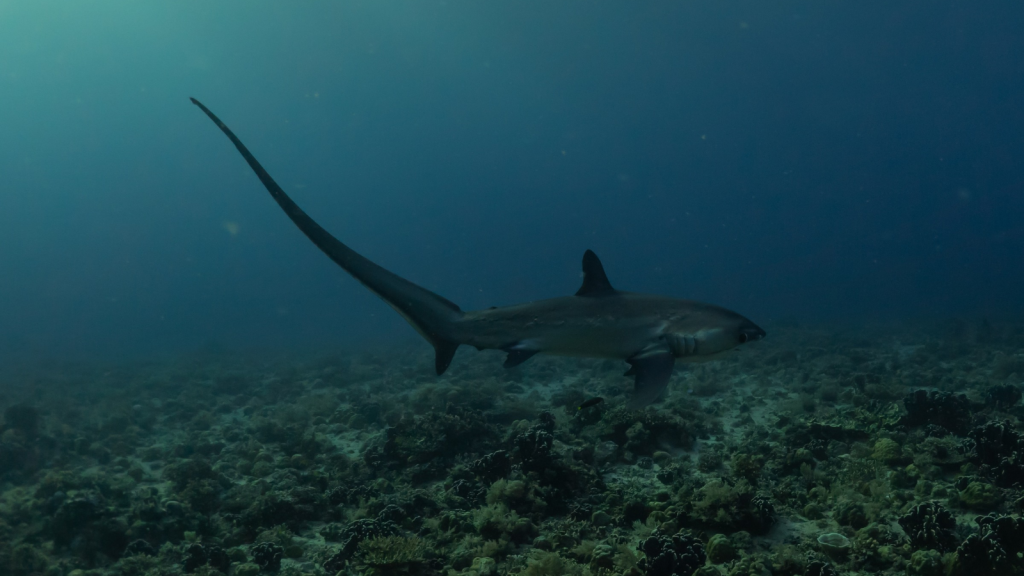
While often seen near the surface, thresher sharks are capable of diving to impressive depths. They’ve been recorded at depths of over 500 metres. This ability to move between deep and shallow waters allows them to hunt a wide variety of prey and avoid predators. Their vertical migrations often follow the daily movements of their prey, a behaviour known as diel vertical migration.
Warm-Blooded Wonders
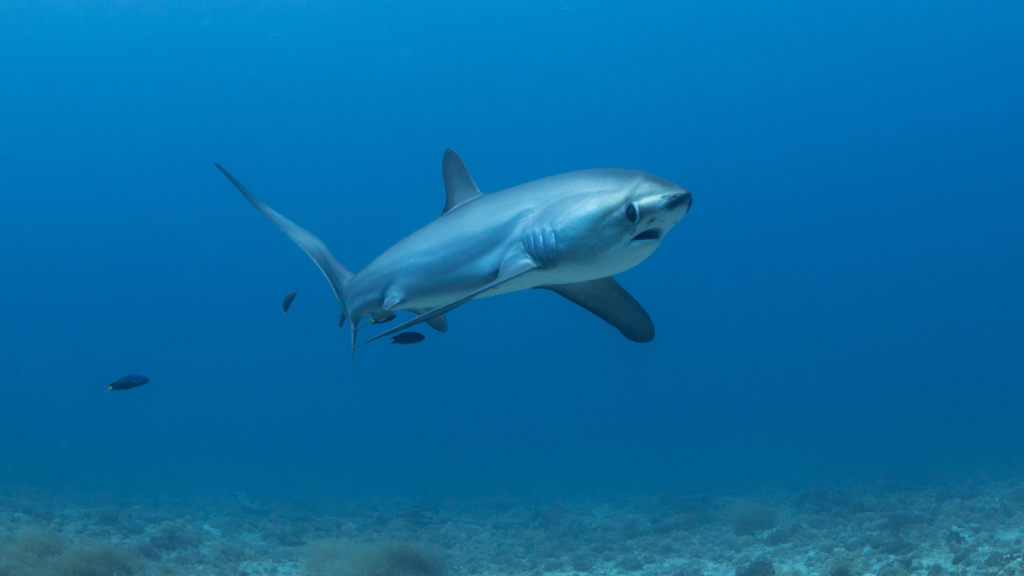
Unlike most sharks, thresher sharks are partially warm-blooded. They can maintain a body temperature higher than the surrounding water, a trait known as regional endothermy. This adaptation allows them to swim in colder waters and hunt more efficiently. Their warm-bloodedness is particularly focused around their eyes and brain, enhancing their visual acuity and cognitive functions in colder, deeper waters.
Schooling Specialists
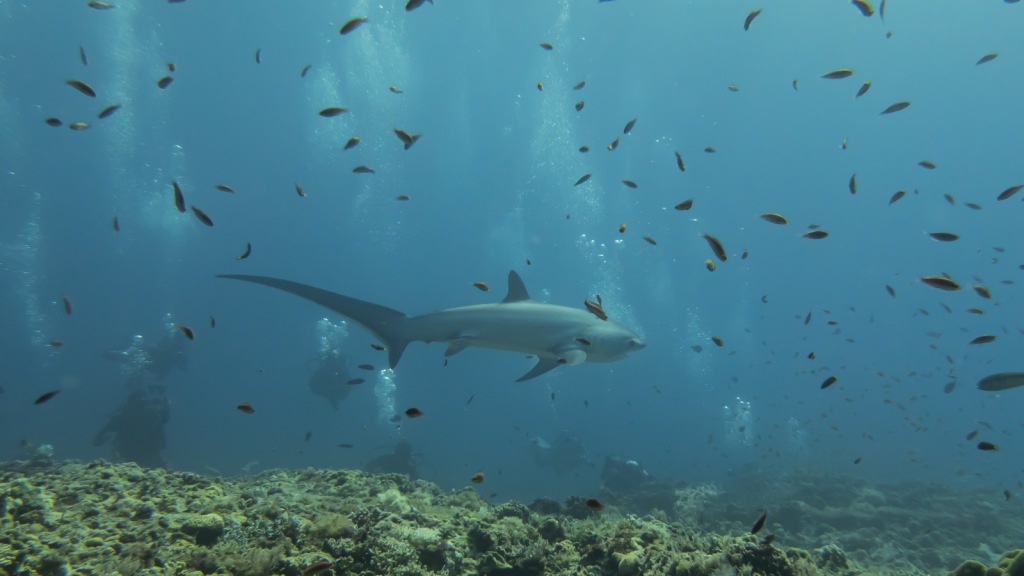
Thresher sharks have a unique way of hunting schooling fish. They swim in circles around a school, gradually tightening the circle. Then, they use their long tails to slap the water, stunning multiple fish at once. This efficient hunting method helps them catch enough food to sustain their large bodies. A single tail slap can stun or kill up to half a dozen fish simultaneously.
Nocturnal Hunters
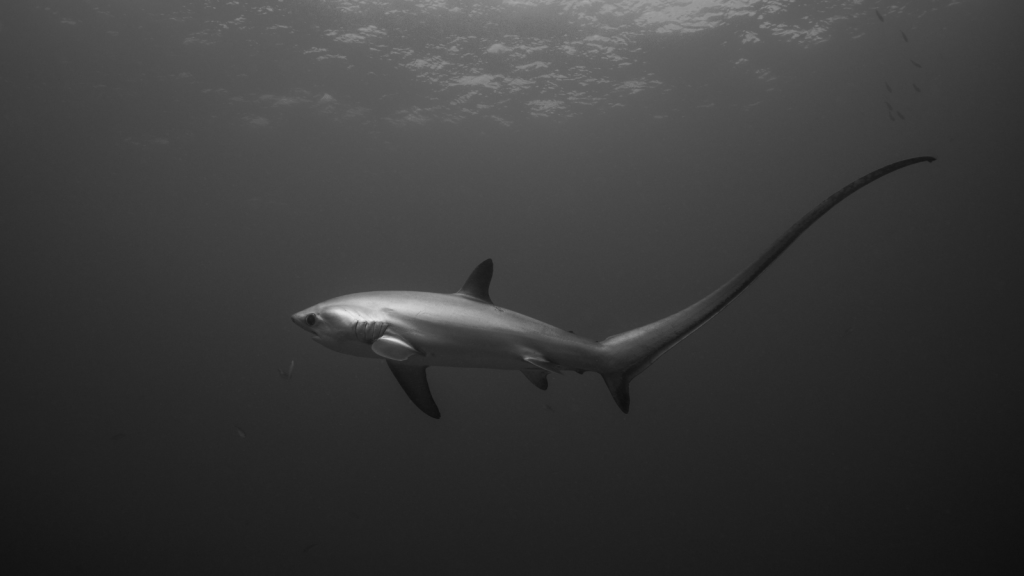
Most thresher shark species are primarily active at night. They spend their days in deeper waters and come up to the surface to feed after dark. This nocturnal behaviour helps them avoid larger predators and take advantage of prey that’s more active at night. Their large eyes are particularly well-adapted for low-light conditions, giving them a significant advantage in nighttime hunting.
Impressive Size

Thresher sharks can grow to impressive sizes. The largest species, the common thresher, can reach lengths of up to 6 metres and weigh over 500 kilograms. That’s about the size of a large car! Despite their size, they’re generally not considered dangerous to humans. The smallest species, the pelagic thresher, still reaches an impressive 3 metres in length.
Slow Reproducers

Thresher sharks have a slow reproductive rate. Females typically give birth to only two to four pups at a time, and pregnancy lasts about 9 months. This slow reproduction makes them vulnerable to overfishing and population decline. Thresher shark pups are born fully developed and can hunt for themselves immediately, an adaptation that helps offset their low reproductive rate.
Unique Eye Design
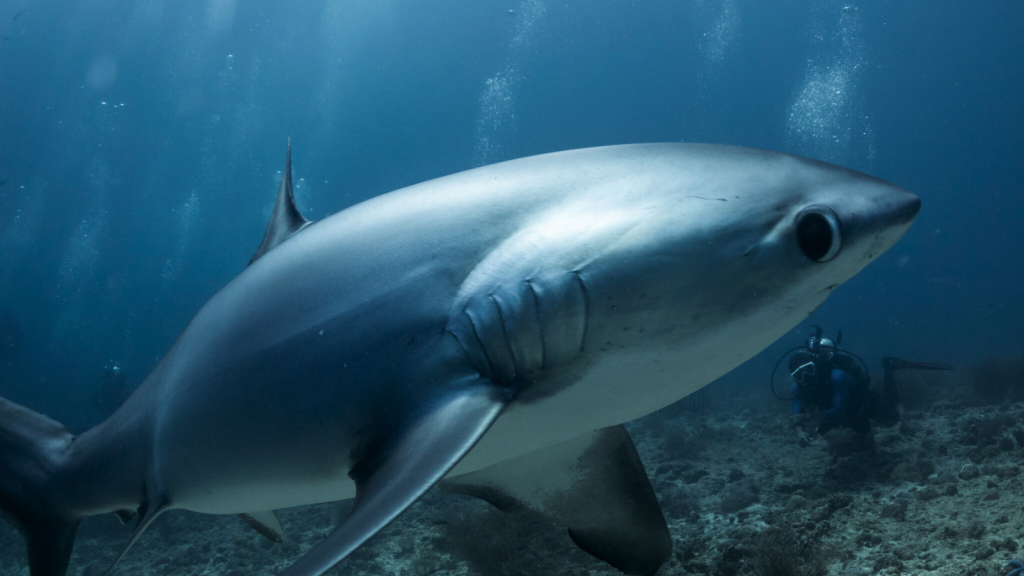
Thresher sharks have unusually large eyes for their body size. These big peepers help them spot prey in the dim light of their deep-water habitats. Their eyes are also equipped with a reflective layer called the tapetum lucidum, which enhances their night vision. This reflective layer is what causes their eyes to shine when light is shone on them, much like a cat’s eyes.
Tail-Standing Behaviour
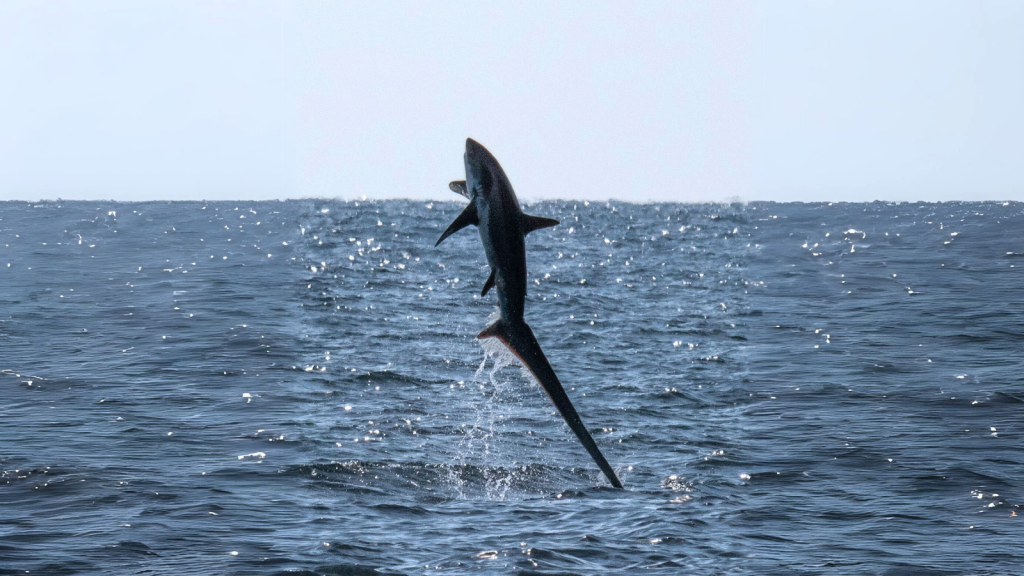
In a behaviour rarely seen in other shark species, thresher sharks sometimes ‘stand’ on their tails at the surface of the water. This vertical position allows them to scan for prey below. It’s a testament to the strength and versatility of their unique tail. This behaviour also helps them conserve energy while hunting, as they can remain nearly motionless while searching for prey.
Cleaning Station Regulars
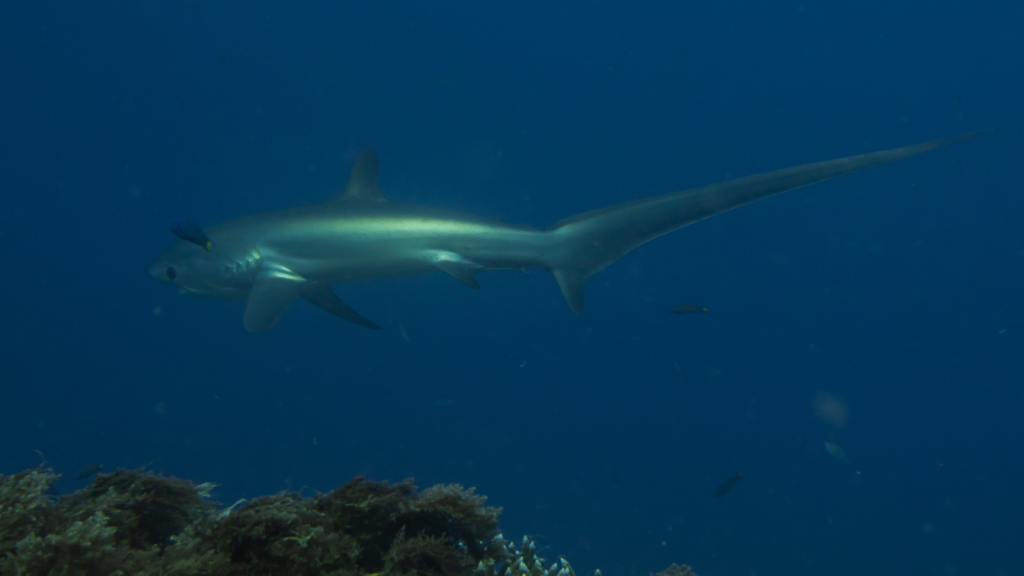
Like many marine animals, thresher sharks visit ‘cleaning stations’ on coral reefs. Here, smaller fish remove parasites and dead skin from the sharks. This mutually beneficial relationship helps keep the sharks healthy and provides food for the cleaner fish. Thresher sharks have been observed spending up to an hour at these stations, demonstrating the importance of this cleaning process.
Supersized Liver
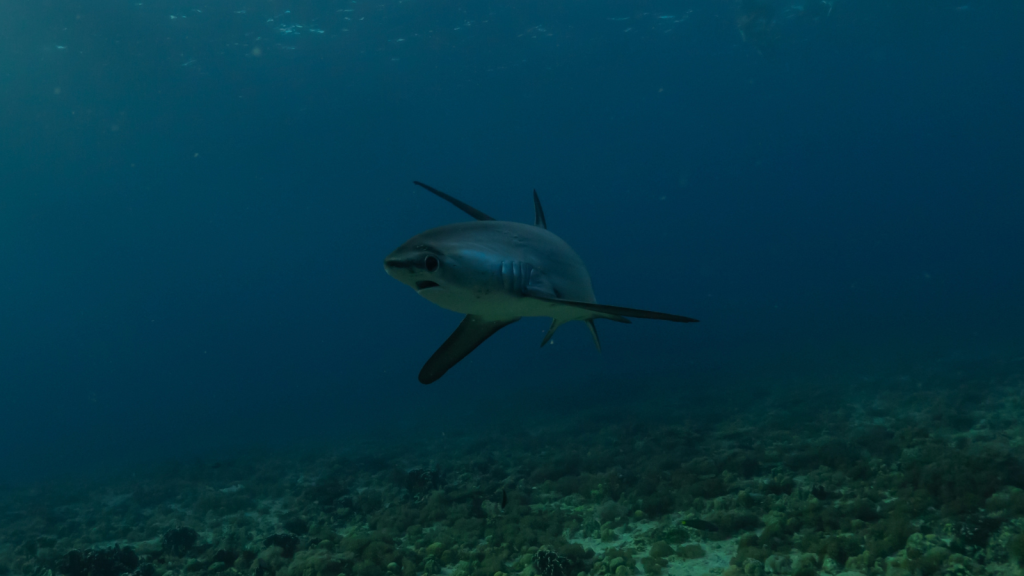
Thresher sharks have remarkably large livers, which can make up to 20% of their total body weight. This oversized organ serves multiple purposes. It helps with buoyancy control, allowing the shark to maintain its position in the water column without constant swimming. The liver also stores energy in the form of oil, which is crucial for their long hunting expeditions and potential migrations. This oil-rich liver has unfortunately made them targets for some fisheries.
Excellent Swimmers

Despite their unusual body shape, thresher sharks are powerful and efficient swimmers. Their large, curved tails provide strong propulsion, allowing them to swim at speeds of up to 30 miles per hour in short bursts. This speed helps them catch fast-moving prey like tuna and mackerel. Their streamlined bodies and powerful muscles also allow them to cover vast distances with minimal energy expenditure.
Masters of Camouflage
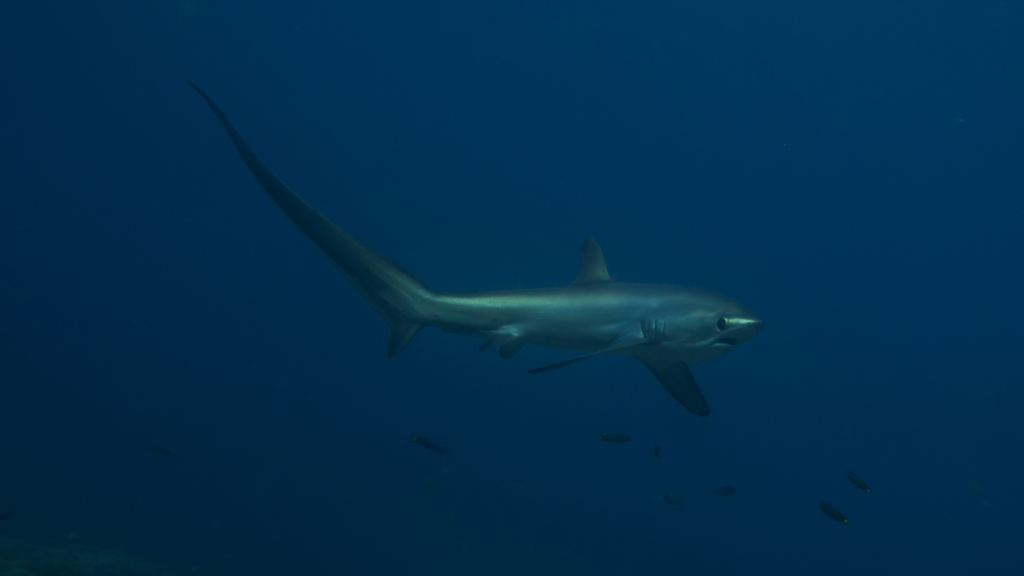
Despite their large size, thresher sharks are experts at blending in with their surroundings. Their dorsal (upper) side is typically a dark blue or grey, while their ventral (under) side is much lighter. This countershading makes them difficult to spot from both above and below in the open ocean. When viewed from above, they blend with the dark depths, and from below, they blend with the sunlit surface waters. This adaptation helps them both in hunting prey and avoiding potential predators. The effectiveness of this camouflage is so great that thresher sharks can often approach prey undetected until the moment they strike.
Mysterious Migrations

Scientists are still learning about thresher shark migrations. Some populations seem to travel long distances, while others stay in relatively small areas. Satellite tagging studies are helping researchers uncover the mysteries of where these sharks go and why. Recent studies have shown that some thresher sharks may travel over 2,000 kilometres in a single year, crossing international boundaries and highlighting the need for global conservation efforts.



